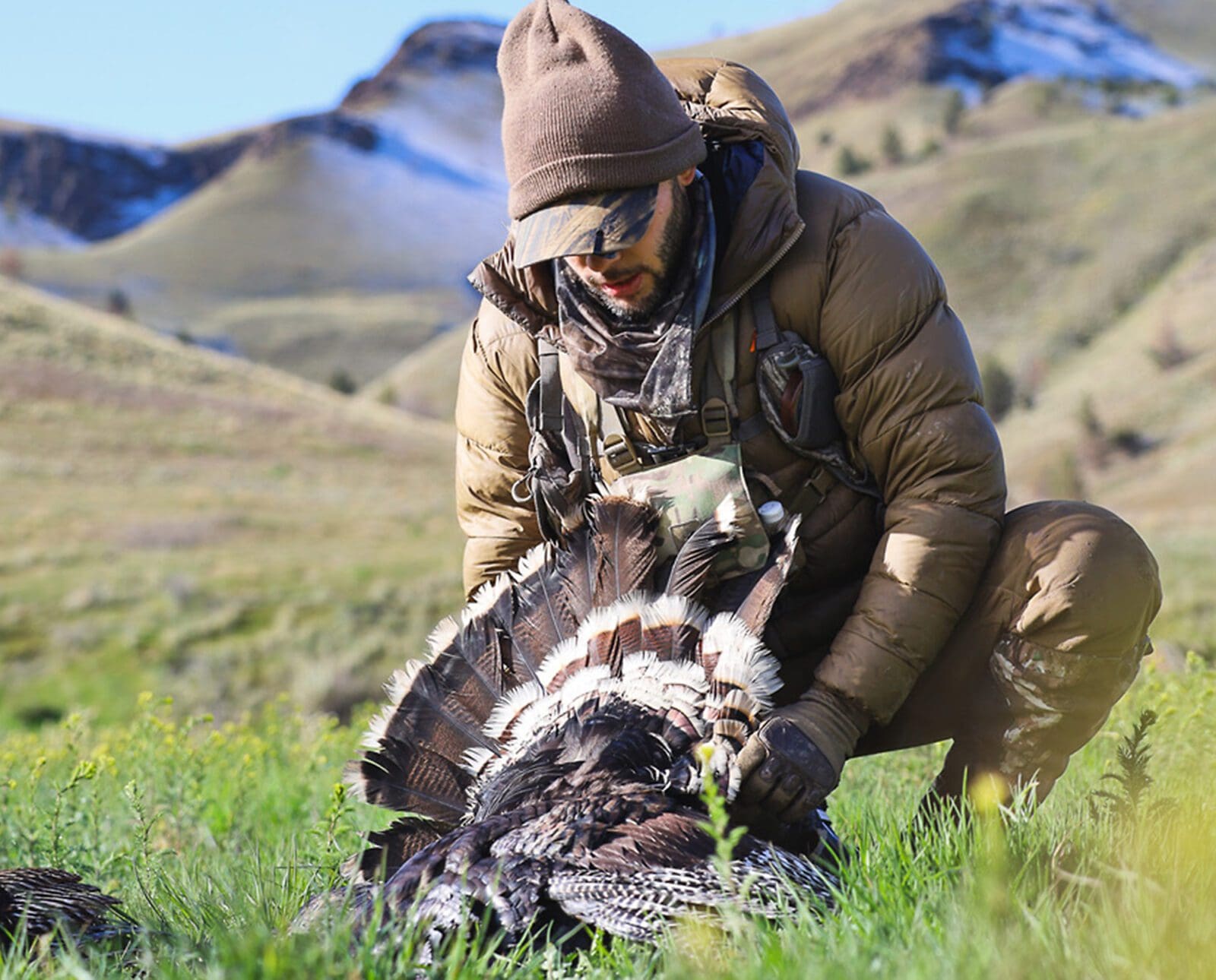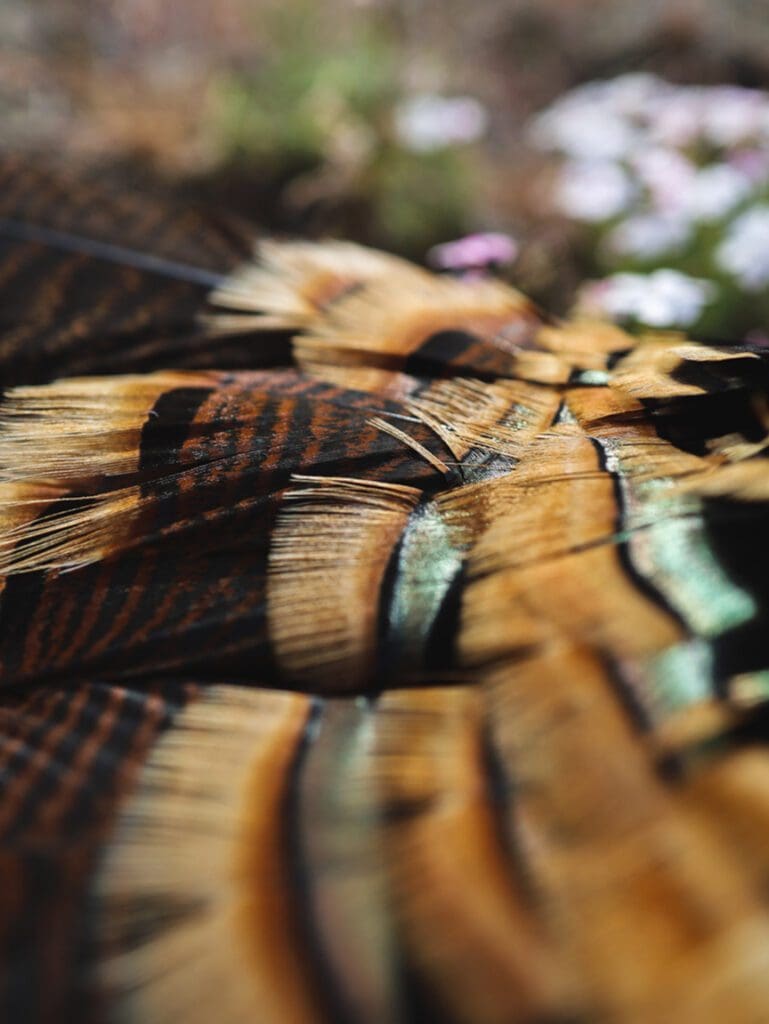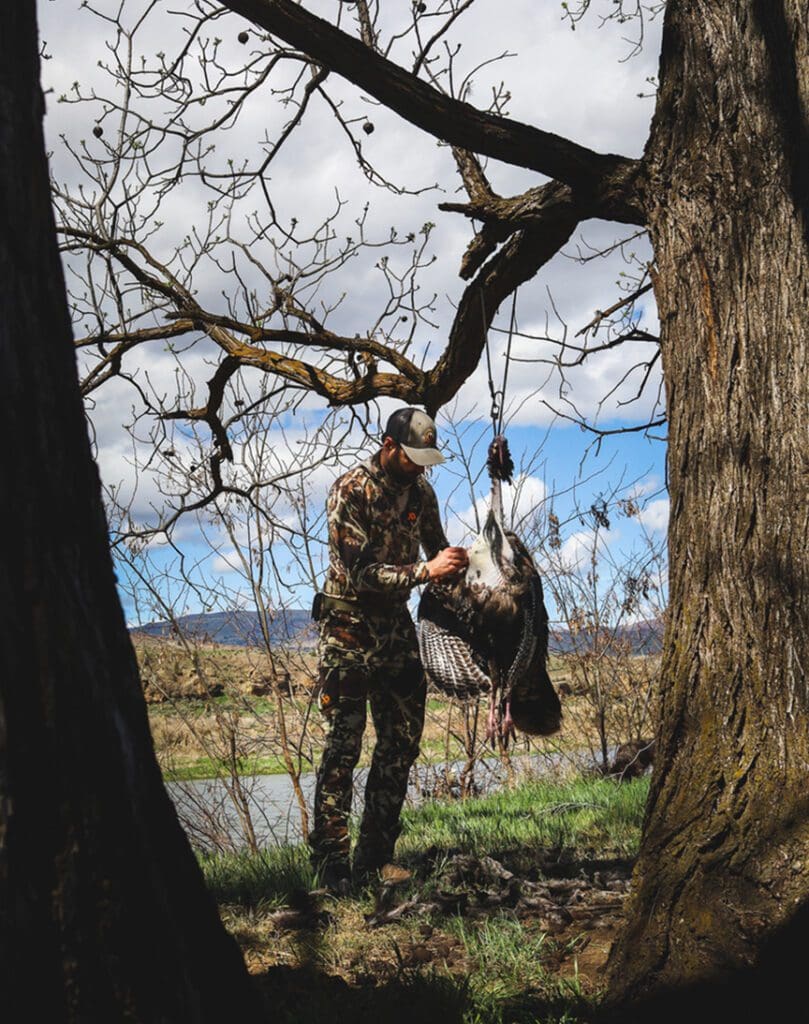Home » Turkey Hunting » How to Hunt Rio Grande Wild Turkeys
How to Hunt Rio Grande Wild Turkeys

Based in Oregon, Tristan Henry is an avid hunter, enjoys…
From the Pacific Northwest and Mountain West to the border of Mexico, there are plenty of opportunities to hunt Rio Grande wild turkeys
In hunting circles, we are beholden to a certain sort of nostalgia. Perhaps it’s simply the nature of our mostly patrilineal tradition; maybe a function of shifting baselines and rose-colored retrospect. Regardless, I do take some solace in the knowledge that when it comes to wild turkeys in most western states—or at least here in Oregon—the good old days of hunting them are the ones here and now.
In his formative years as a hunter, my father did not hunt wild turkeys. Neither did any of the now 50- to 70-year-old mentors I’ve been lucky to learn from. That may seem odd, and, in any other state, I’m sure that it would be. Yet, in the Pacific Northwest, these big birds are a relatively new entry to our hunting lexicon as well as our landscape, and chasing them is a tradition only in its infancy.
Introduction of Rio Grande wild turkeys in Oregon
Oregon’s first turkey season opened in 1987 after 26 years of transplantation efforts. The first several initiatives started with Merriam’s wild turkeys from the mid- and mountain west, but, in 1975, Rio Grande wild turkeys were brought in.
Due to their adaptability and fecundity, Rios quickly found sanctuary in the drainages of the Willamette Valley and in the Blue Mountains in the northeast. During those early seasons in the late 80s into the late 90s—while populations were taking hold—hunter harvests were predictably low. Still, Rios expanded through the folded terrain and river bottoms with gusto, just as they did in their seminal habitat. They encountered no real direct competition from native fauna in their preordained niche and quickly colonized the verdant, sheltered, and forage-rich riparian corridors on both sides of the Cascade Mountains.
I’ve been fortunate to chase Rios both in my home state as well as in some of theirs, and it has seemed to be largely the same: turkeys do what turkeys do. They roost, feed, and fill their gizzards with grit, and if you add a little seasonally-elevated hormones, they strut, fight, and breed, too. Of the many things I’ve gleaned spending time fascinated by wild turkeys, the one that has given me the most confidence is simply knowing when and where to go to find the greatest likelihood of interaction with these weird, wild birds.
How to find Rio Grande wild turkeys
If you hunt long enough, you’ll be sure to hear the phrase, ” are where you find them!”
And for good reason.
Itinerant turkey hunters know their landscapes, and likely know in great detail how birds will behave from roost to roost, but that does little good if you’re flying in blind. In which case, it pays to look for habitat features that turkeys find irresistible.
If I have not made it clear yet, proximity to water is paramount. Birds look to it both for safety and sustenance, but, more important, they are a riparian species. Look to moving water and the green spaces on either bank where vegetation provides food and shelter. This is where they live most of their lives, and they will only make minor concessions when the time comes to procreate. Even then, they still need to eat or make a quick retreat from any predatory advances.

Open spaces that are cover-adjacent make for prime hunting ground, too, because it makes birds observable—to each other and to us.
“Anecdotally, in Western states, I see a lot more Rios and I see a lot more males, too,” said Brandon Dyches, Oregon Habitat Access program coordinator for Pheasants Forever. “But that may be due to the fact that we just have more open spaces than the woodlots and forests of the Eastern U.S.”
Perhaps that would explain the vocal habits of the more boisterous Eastern and Merriam’s subspecies.
“Either way, Dyches said, “I don’t hunt them any different.”
To maximize my chances in a new place, I look for large roost trees near water, some cover, some open space and in a perfect world, a bit of gravel, the latter being simultaneously the least critical but the most notable difference in my own success. Logging roads and fluvial plains can be found within a couple hundred yards of prospective roosts and covers, and so often have made the difference in finding a turkey’s route and intercepting him.
Rio Grande wild turkey behavior
For nine or 10 months out of the year, Rio Grande turkeys peck up and down their respective creek bottoms, riversides, and shelter belt margins largely unnoticed and undisturbed. But, when winter’s monochrome starts to give way to green, turkeys are called to copulate, and we are called out of warm beds at early hours by spring’s thunder and the promise of the strut.
In their home range, Rios start to strut as soon as early March, giving them several weeks to breed before seasons open in most states. In the northern reaches of the Rio’s range, however, spring’s arrival can be inconsistent. While hens’ cycles are regulated by photoperiod or length of day, weather patterns can easily accelerate or delay this behavior and, thus, dictate whether or not the strut will pre-date, coincide with, or follow opening weekend. Careful monitor of area weather helps, but early scouting trips trump all.
At first, groups will be large and their movements entirely dictated by the hens. You will see toms puffed up and subdominant males begin to set their pecking-order. Yet, until the hens excuse themselves to brood, vocalizations seem to play second-fiddle to visual pageantry and dance. In my limited experience, this early season is the time for patterning and strategy. Calling can be effective, but not nearly as effective as when hens have gone to nest. Once females have begun to brood, the economics shift to favor the caller and the relative glut of males turns competition to an all-out war for the rights to reproduce.
How to hunt Rio Grande wild turkeys
As it is in any pursuit, there is no substitute for repetition. No one learned woodsmanship by reading volumes or watching videos. Time with turkeys eclipses all, and knowing how they interact with each another should inform how you interact with them as well.

Calling sequences can bring a willing tom into range shockingly fast, but it can also take hours. In open country, decoying and fanning can sometimes offer a little more information, or at least information that is much easier for some hunters to process. And, when you have line-of-sight on a bird and can easily judge his vector, the decision to wait or move on can almost seem like it’s being made for you. Since I’ve mentioned fanning, albeit tangentially, it should be acknowledged that the practice is not without its risks—the practice is even banned in six states. While I would strongly discourage anyone from doing it on public land, I will admit that carrying a tail fan is part of my turkey hunting system. It can illicit an impressive response when carefully implemented, similar to the response produced with a half- or full-strut decoy in the right company. We are often discouraged as hunters to anthropomorphize, but I find it to be useful when employing a decoy or fan.
While it may be a tired trope, the bar room scenario really is right on the money in turkey hunting. To experience being rushed by a bachelor-group of late season toms spoiling for a fight, watching their faces as they turn from white or pale blue to bright red in the span of seconds and their alien features modulating shape and size, one may get the sense that they are witnessing something downright antediluvian. It’s certainly one of the most primal experiences the uplands have to offer.
Based in Oregon, Tristan Henry is an avid hunter, enjoys wild things, protecting wild places, and eating wild food.




I read your article with interest. Do you have access to Rio Grande turkey feathers for fly tying?